Description of taste and flavor characteristics of Colombian Huilan coffee beans introduction to the brewing methods of Colombian coffee
Colombian coffee beans in the front street in addition to Flower Moon Night, Rose Valley, Hua Jian, Swiss water-treated decaf coffee, there is also a rations bean Huilan coffee, which is also a fine mix of beans. The reason why Colombian beans are used to make mixed beans, in addition to the good flavor of its coffee beans, but also the most basic feature is stability, ensuring the stability of quantity and quality. Colombia as the third largest coffee producer in the world, both the output and quality of coffee are quite guaranteed, so this also makes Colombian coffee has a pivotal position in the world.
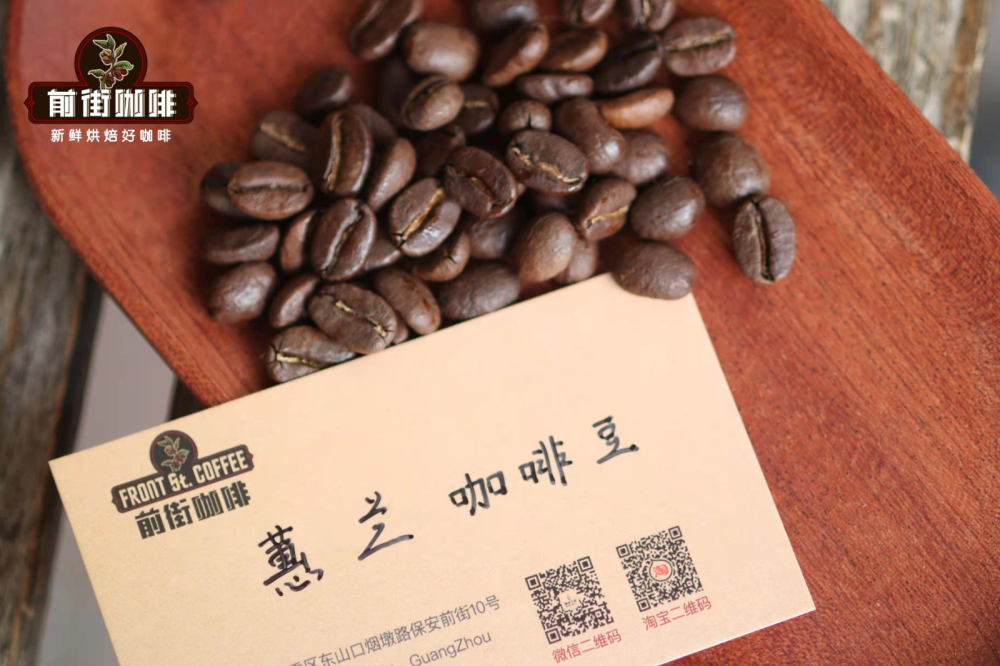
In Colombia, there is a tropical rain forest climate in the southern part of the eastern plain and the Pacific coast, and a savanna climate in the northwest. Average annual temperature: 15.8-20.5 degrees Celsius. The average temperature in the coffee area will vary between 18 ℃ and 22.5 ℃, with annual precipitation of 1000-2500 mm. The regional nature of coffee is strong due to latitude changes and the existence of 86 different microclimates between the producing areas of southern and northern Colombia.
Colombian coffee producing area
Colombia is the country with the largest production of washed Arabica in the world, and it is also the only country in the world that can only plant Arabica varieties. And with the strong support of the national government policy, Goran has changed from a big heroin grower to a big coffee producing country today. Colombia's boutique coffee bean producing areas are mainly in the south, above 1500m above sea level, mainly distributed in Cymbidium, Cauca, Nalinglong and Tolima, all of which have delicate sour and sweet berries.
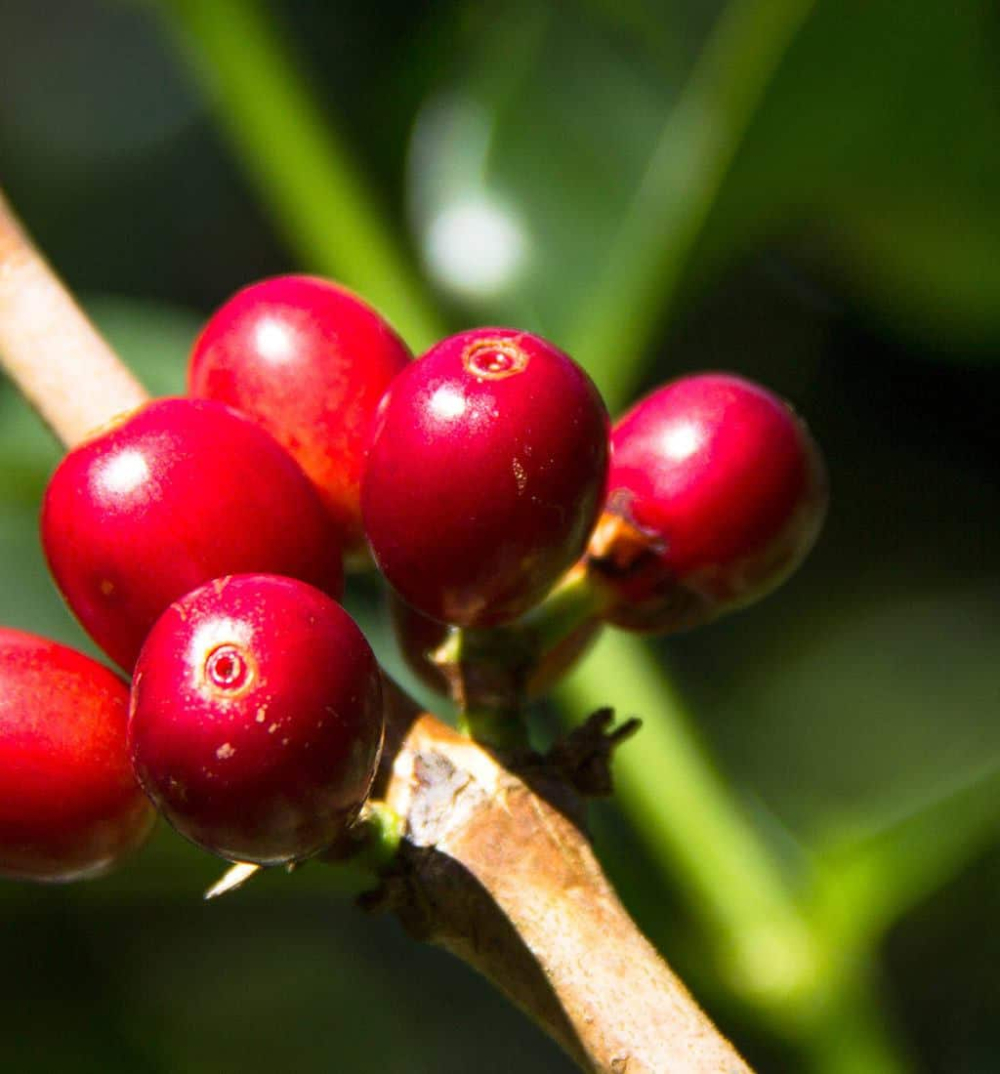
Columbia Huilan (Colombia huila)
Colombia huila, Colombia: located in the southwest of Colombia, it is one of the main growing areas of boutique coffee in the country. It belongs to the selected alpine coffee beans of the Colombian state company and is known as the national treasure of Colombia. It is one of the major coffee growing areas and is the most famous boutique coffee producing area in Colombia. This area is a hilly area surrounded by mountains, more than 1500 meters above sea level, where the most important rivers in Colombia meet, thus bringing a wealth of water resources and moisture. Contrary to coffee fans' impression of balanced and mellow Colombian coffee, the fine Goran products produced by many small farmers in micro batches are actually very characteristic of the flavor of the producing area. Therefore, the coffee beans produced in Huilan area have a strong taste, heavy texture, usually with nuts, chocolate and caramel and other aromas and suitable acidity.
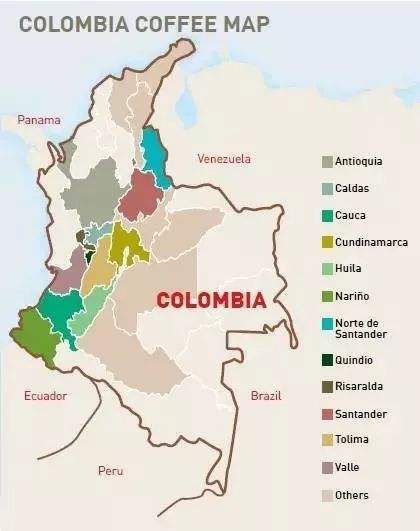
According to data from the Central Coffee Authority of Colombia (FNC), the Whelan region accounts for about 18% of Colombia's total coffee production and was given the official name of origin in 2013. Qianjie believes that the coffee produced by Huilan is so popular, not only because of its quantity, but also because of its quality and reputation. Coffee batches produced by local farms have won several Cup of Excellence awards, and many roasters, baristas and cafes give priority to Whelan's coffee beans. This is due to the fact that Whelan Coffee has both full nutty aroma and bright and pleasant acidity, and is recognized as the representative product of Colombia's top boutique coffee for its excellent balance.
Cauca province
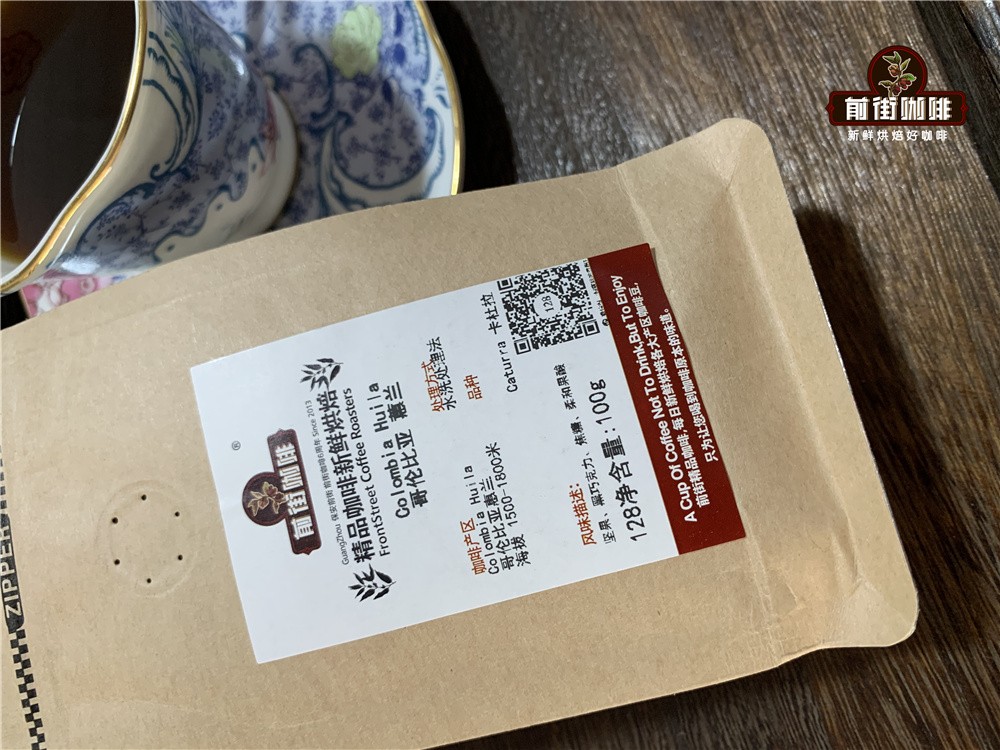
Cauca province is a certified coffee producing area in Colombia, with an average elevation of 1758m and a maximum elevation of 2100m. The topography, precipitation, temperature and volcanic soil of the area prepare suitable conditions for the growth of coffee. 80% is mountainous, with parallel mountain systems in the east and middle, part of the Andes, and the central mountain system includes two major volcanoes, Sotara and Petacas. The border province of Cauca, like other southwestern producing areas, has a distinct unimodal distribution (monomodal). The dry season mainly occurs from August to September each year, followed by a concentrated coffee season followed by the following year's concentrated coffee harvest season. The biggest difference in climate between Cauca and other Colombian producing areas is probably the relatively large temperature difference, with a daily average temperature of 11 ℃ and a daytime average temperature of 18 ℃. The temperature difference between day and night is an important factor in quality coffee. Low night temperatures and relatively higher elevations slow down the growth of coffee, allowing coffee seeds and beans to more fully absorb the nutrients of coffee fruits, as well as better acidity and commendable special sweetness of Coca Coffee.
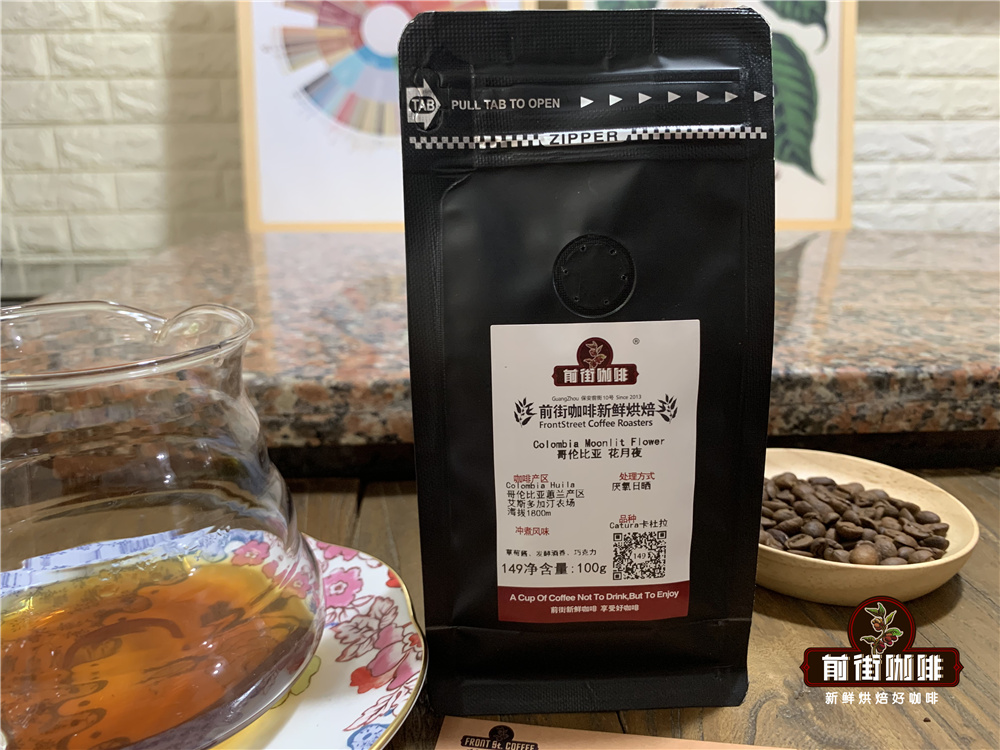
Nalinglong province is located in the southwest of Colombia, facing the Pacific Ocean to the west and Ecuador to the south. The Andes Mountains run through the province. Coffee is grown on a high-altitude cloud belt of 1600m and 2300m, with fertile volcanic soil. Most of the annual output of Nalinglong is purchased by large American bean merchants, but the total annual output of Nalinglong province is about 150000 bags, while the portion of selected beans is only about 6000 bags.
Coffee bean variety
In addition to Kaddura Caturra, Bourbon Bourbon, Colombian Iron pickup Typica and Pacamara Pacamara, Colombian coffee varieties have their own three disease-resistant varieties, namely Castillo Castillo, Tabi Tabi and Colombian Colombia with the same name as the country. Of course, there are also some rare and valuable varieties such as Rosa Gesha, small-grained Mocha Mocca, Lumi Sultan Rume Sudan, Eugene Odes Eugenioides, pointed Bourbon Laurina, Mara Rosa Maraguesa, Pink bourbon Pink Bourbon.
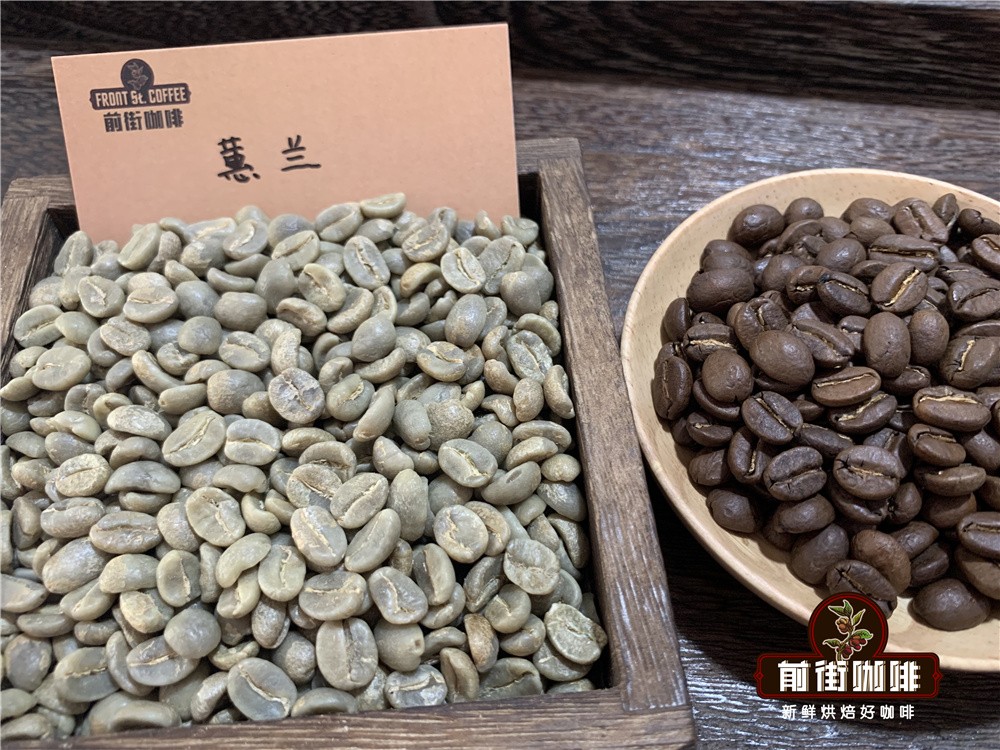
Cymbidium producing areas mainly grow Kaddura Kaduai varieties which are common in Central and South America. The clean taste and soft acidity of the two varieties, coupled with the high altitude of the cymbidium producing area and the blessing of volcanic soil, the coffee beans produced in this area have delicate and soft berry acidity, roasted nut aroma and obvious caramel finish. Sweet.
The coffee variety of Flower Moon Night and Rose Valley currently on the shelves in Qianjie coffee is Kaddura.
Iron pickup
Like other regions, the iron pickup is a long-standing coffee variety grown in Colombia, which was first introduced by a priest from the French Antilles via Venezuela from about the end of the 16th century to the early 17th century. Iron pickup has an excellent flavor, with a light floral aroma, excellent acidity and full body, but it has too little output and high agronomic costs and technical requirements. As a result, most coffee farmers choose higher-yielding coffee varieties.
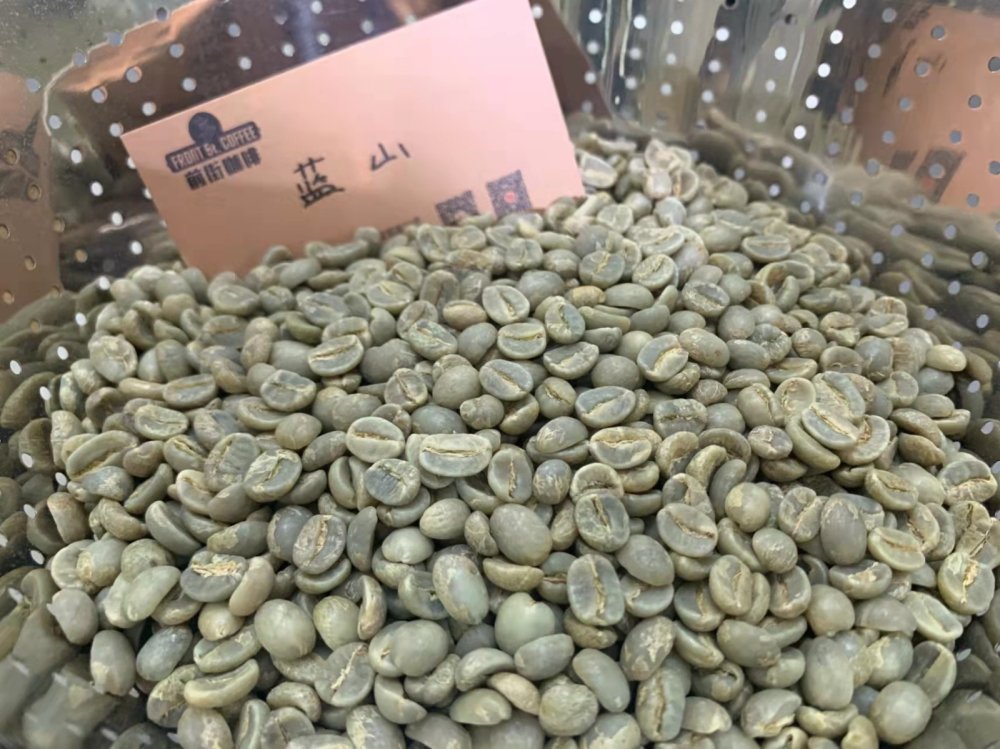
At present, only a few areas of Colombia still grow iron pickups. Qianjie Coffee this year tested an anaerobic sun-treated iron pickup from Columbia Pearl Manor with a high-quality citrus acid, passion fruit and fermented aroma.
Bourbon
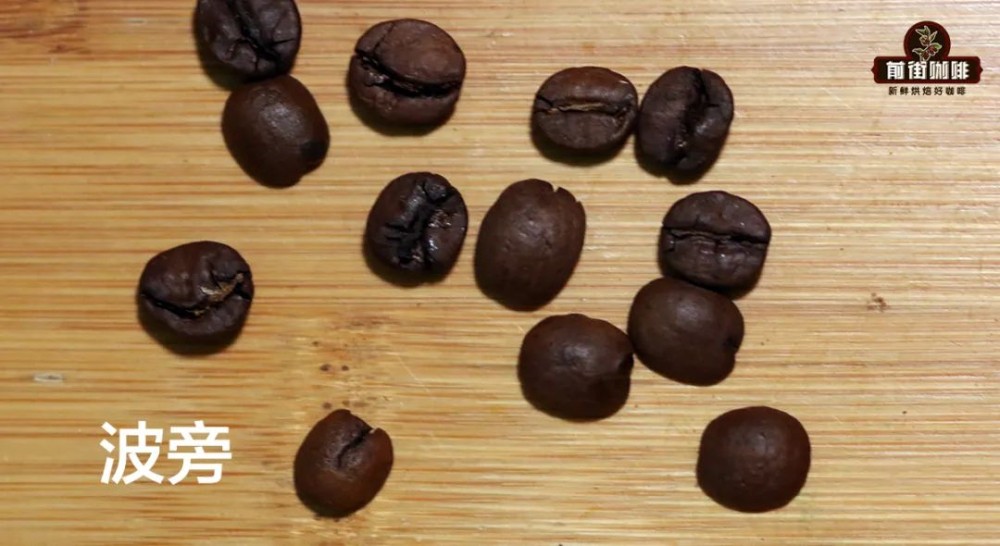
Bourbon is a variety of iron pickup, its biggest feature is that the bean body has become round, more excellent in acid quality, with a red wine-like flavor. The bourbon species was officially introduced to South America in 1860, first introduced in Brazil to replace low-yield tin cards, and then spread to Colombia, where bourbon cultivation is not widespread and is one of the few regions to grow it. A pink bourbon from Paraiso Manor in Cauca province is on the front street coffee. Its clear, clean, lemon and tomato-like acidity is reminiscent of Kenyan coffee.
Kaddura
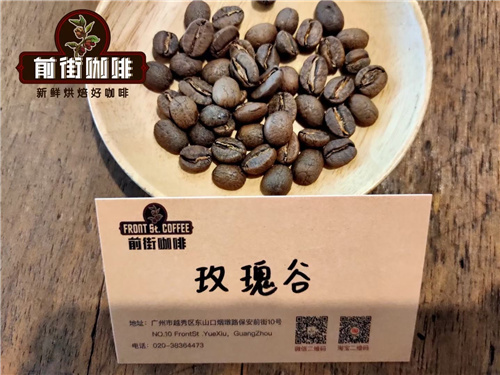
Kaddura is a natural variety of bourbon. Compared with bourbon, it has the advantages of exposure property (no shade forest), short size (easy to pick) and many branches (high yield). It is not as good as bourbon in flavor. Therefore, it has become the main variety of coffee in Colombia. Interestingly, Kaddura was found on a plantation in the Brazilian state of Minas Gerais and screened by the Agricultural College of the State of Sao Paulo (IAC) in Campinas, Brazil. But the result of the experimental planting in Brazil was not ideal, and when it came to Colombia, Kaddura was immediately reborn and planted nationwide.
Huilan production area treatment method
Colombia is rich in water resources and is very suitable for washing, so Colombian coffee beans are mainly washed, and farms based on households are equipped with a special raw bean processor (Ecomill or Eco-Pulper). With the popularity of special treatment and the "open-door" of Colombian coffee beans, more and more special treatments are applied to Colombian coffee beans, the most representative of which is anaerobic fermentation.
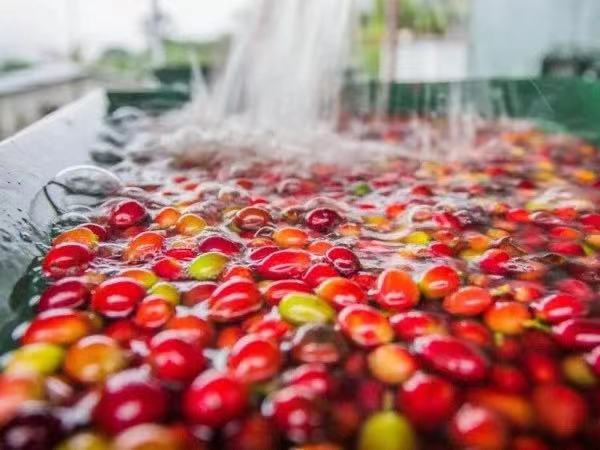
Such as Columbia Flower and Moon Night Coffee, Rose Valley Coffee and passion fruit coffee on the front street, but most of the farmers in Huilan still insist on traditional washing treatment. Qianjie also believes that washing can best reflect the local flavor of local coffee beans, so Qianjie chose Colombian water-washed Huilan Coffee as the coffee representative of Colombian coffee-producing countries.
Washing treatment process 1. First of all, coffee farmers will pour all the harvested coffee fruit into the water, so that the bad and defective coffee beans will surface and sink to the bottom of the water is the quality of coffee fruit, and this operation also greatly reduces the time wasted by picking one by one. two。 Put the screened coffee fruit into a peeling machine to remove the skin and flesh, and after removing these coffee fruits, there will still be a layer of pectin on the surface of the coffee fruit, so wash away the adhesive on the surface of the coffee fruit with a lot of water.
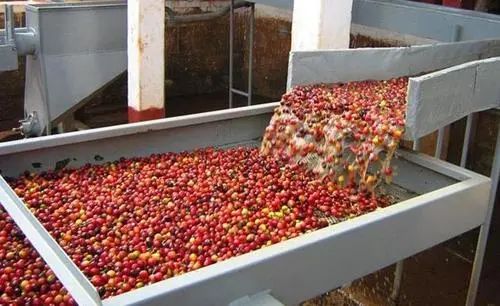
3. The next step is to use fermentation to completely remove the pectin, which takes about 18 hours, but after the fermentation is completed, the fermentation bacteria adhere to the surface of the coffee fruit, so it needs to be washed with a lot of water again, like this step. Getting 1 kilogram of coffee beans requires 40 to 50 kilograms of water, which Qianjie thinks is a very large number. This is why water washing cannot be adopted in dry countries. 4. Washed coffee beans can be dried, some areas will be directly taken outside to dry, and some more developed producing areas, will be sent to the treatment plant to use machine drying, so that the water content of coffee is as low as 11%. Finally, the dried coffee beans are stored and packaged for sale and export.
Qianjie cooking suggestion:
In order to brew a cup of delicious coffee, Qianjie thinks that any way of brewing needs fresh coffee beans. Qianjie has always believed that the freshness of coffee beans has a great relationship with the flavor of coffee, so the coffee beans shipped in Qianjie coffee are all within 5 days of baking time. The purpose of Qianjie roasting is "freshly roasted coffee", so that every guest who places an order is the freshest coffee when he receives it. The bean cultivation period of coffee is about 4-7 days, so when the guest gets it, it is the time when the flavor is the best.
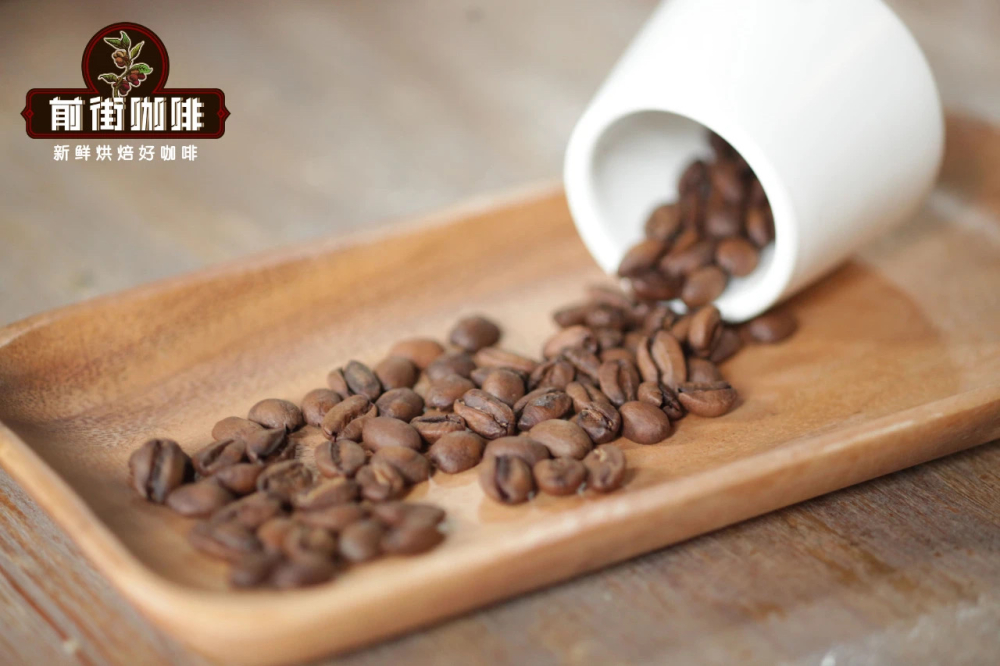
For those who need to be ground, Qianjie warmly reminds you that if the coffee beans are ground in advance, there is no need to raise the beans, because in the process of transportation, the pressure caused by carbon dioxide in the package can also make the coffee flavor round. so you can drink a cup of coffee as soon as you receive the coffee powder. But the coffee powder needs to be brewed in time, because the coffee powder oxidizes more quickly after contact with the air, that is to say, the flavor of the coffee will dissipate more quickly, and the flavor of the coffee is not so good. Therefore, Qianjie suggests buying whole beans, grinding and flushing now, so that we can better taste the flavor of coffee.
Parameters for brewing Colombian Cymbidium Coffee in the front street:
When brewing Huilan coffee in the front street, the KONO filter cup is used, and the KONO's ribs stop when the height of the filter cup is less than half of the height of the filter cup. This design is actually designed to ensure that the filter cup is wet and close to the wall of the filter cup, so as to limit the airflow, which will increase the water absorption time of coffee powder particles, so that the extracted coffee is more uniform as a whole, and improves the mellow taste.
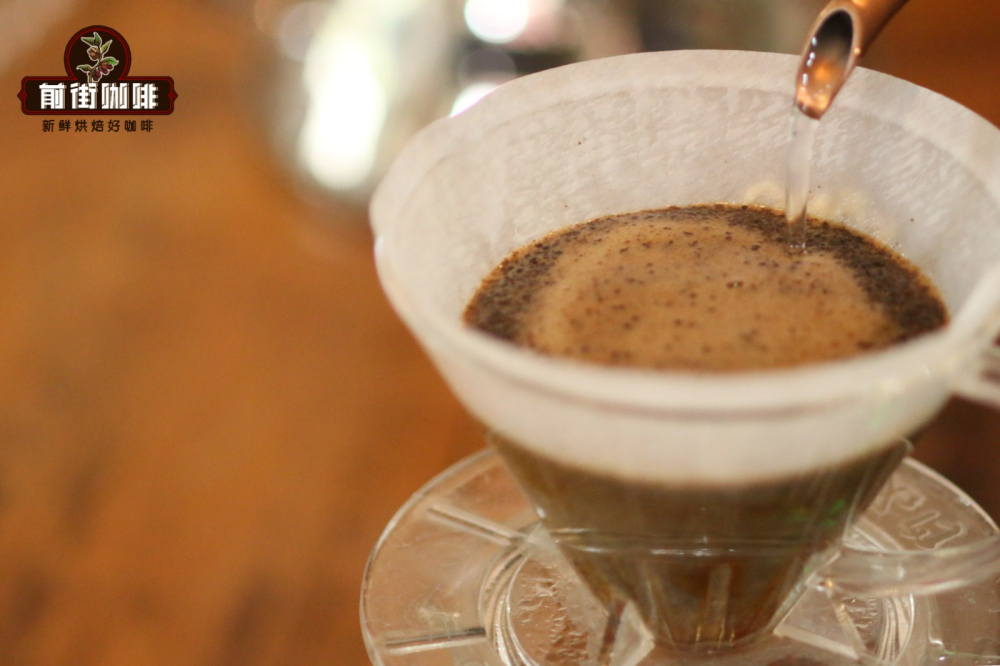
KONO filter cup, 88 degrees Celsius water temperature, 1:15 powder / water ratio, 15g coffee powder, grinding degree (standard sieve 20 pass rate 75%), three-stage extraction.
The use of segmented extraction, with twice the amount of coffee powder water for steaming, that is, 30 grams of water for 30 seconds, and the reason for the need for steaming process is to make coffee powder can discharge the internal carbon dioxide gas, so that the latter stage of the extraction is better stable. When the small water is injected around the circle to 125 grams, the injection will be stopped until 225 grams, then the filter cup will be removed after the dripping of the filter cup, and the extraction time will be 2 minutes 39 grams. Next, pick up and shake the whole cup of coffee, then pour it into the cup and taste it.
Columbia Huilan coffee flavor characteristics: the entrance is the nutty flavor, alcohol thickness is high. Prefer the sweetness of caramel, there will be a slight fruit acid at low temperature.
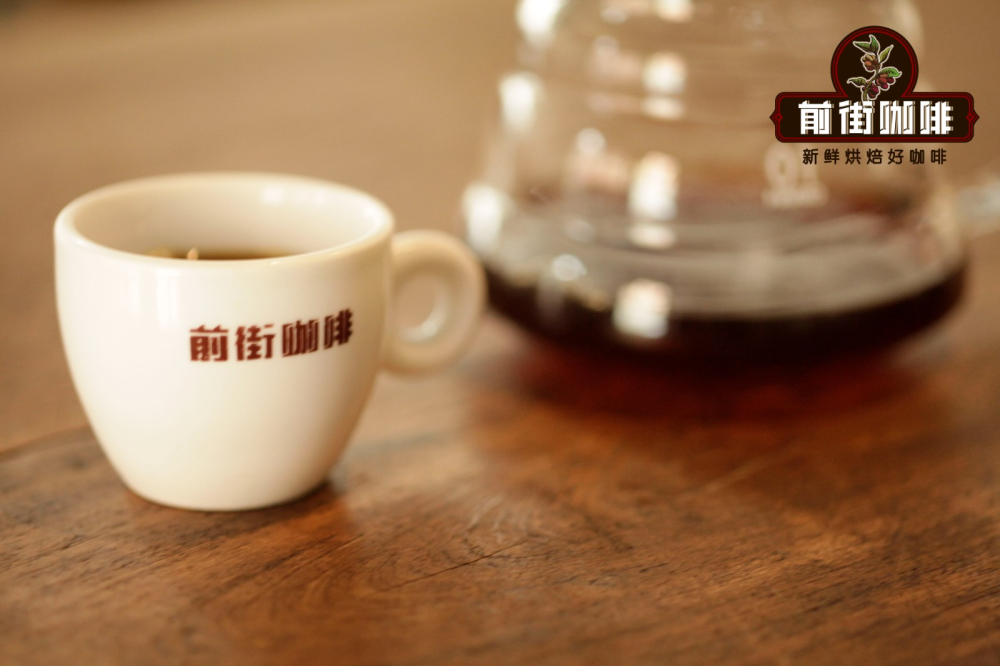
Although Qianjie believes that the washed coffee beans can better reflect the local flavor, the coffee beans with special treatment also have a unique flavor. For example, Columbia Flower and Moon Night Coffee on Qianjie has strawberry jam, chocolate and fermented wine, while Rose Valley Coffee has roses, peaches and chocolates, which are very popular. For those who like coffee but are afraid that they can't sleep because of coffee, you can also choose Colombia's Swiss water-washed decaf. Colombian decaf beans are also very good, full-bodied and full-bodied, with a hint of vanilla and dark chocolate on the finish.
Professional coffee knowledge exchange more coffee bean information please follow the coffee workshop (Wechat official account cafe_style)
For more boutique coffee beans, please add private Qianjie coffee on Wechat. WeChat account: qjcoffeex
Important Notice :
前街咖啡 FrontStreet Coffee has moved to new addredd:
FrontStreet Coffee Address: 315,Donghua East Road,GuangZhou
Tel:020 38364473
- Prev

A brief introduction to the planting and Development of Katim Coffee Bean Flavor description area
Following Cafe (Wechat official account vdailycom) found that Beautiful Cafe opened a small shop of its own, Catimor: in 1959, the Portuguese mixed Brazilian Kaddura with Timo to produce a disease-resistant Katim / Katimo, which is now an important variety of commercial beans. Katim is a variety introduced later, with a relatively stable yield and strong resistance to diseases and insect pests.
- Next
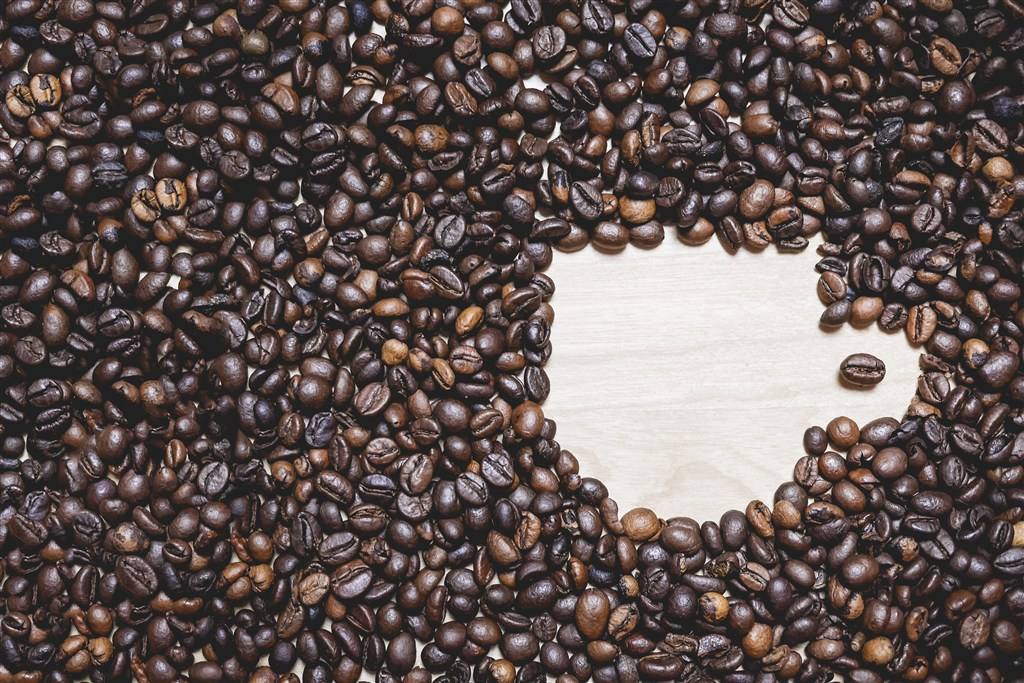
Colombia Whelan washed coffee bean flavor
Valencia Coffee Mill is a small-scale coffee production family located in Neiva, Huy Lan Province. This family has a 30-year history of coffee cultivation and processing, and has always maintained a relatively low profile and concentrated on the fine processing of coffee. Unlike most coffee growers and processors, Valencia abandoned Colombia's original uniform standards and stopped using supr
Related
- Detailed explanation of Jadeite planting Land in Panamanian Jadeite Manor introduction to the grading system of Jadeite competitive bidding, Red bid, Green bid and Rose Summer
- Story of Coffee planting in Brenka region of Costa Rica Stonehenge Manor anaerobic heavy honey treatment of flavor mouth
- What's on the barrel of Blue Mountain Coffee beans?
- Can American coffee also pull flowers? How to use hot American style to pull out a good-looking pattern?
- Can you make a cold extract with coffee beans? What is the right proportion for cold-extracted coffee formula?
- Indonesian PWN Gold Mandrine Coffee Origin Features Flavor How to Chong? Mandolin coffee is American.
- A brief introduction to the flavor characteristics of Brazilian yellow bourbon coffee beans
- What is the effect of different water quality on the flavor of cold-extracted coffee? What kind of water is best for brewing coffee?
- Why do you think of Rose Summer whenever you mention Panamanian coffee?
- Introduction to the characteristics of authentic blue mountain coffee bean producing areas? What is the CIB Coffee Authority in Jamaica?

